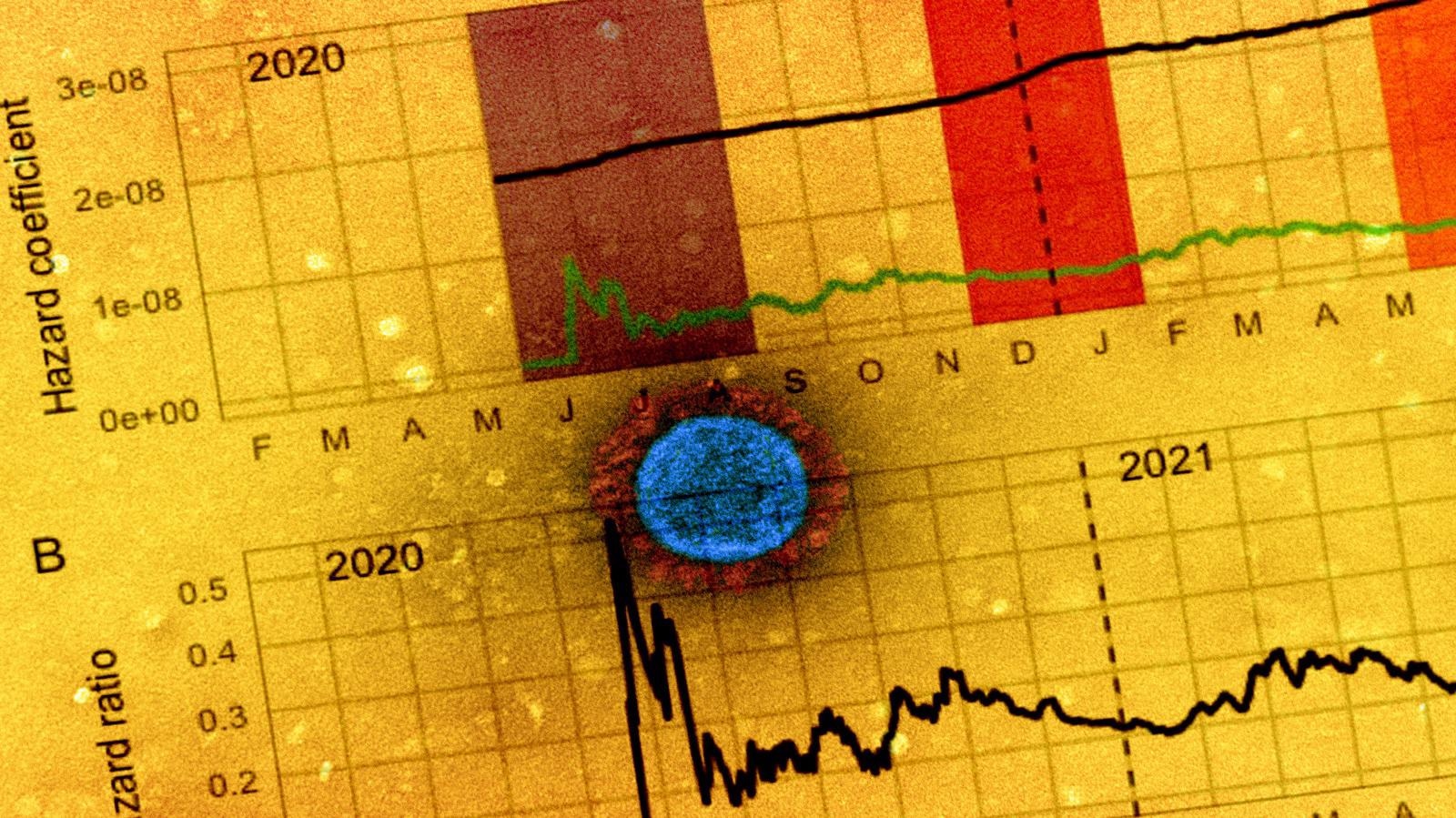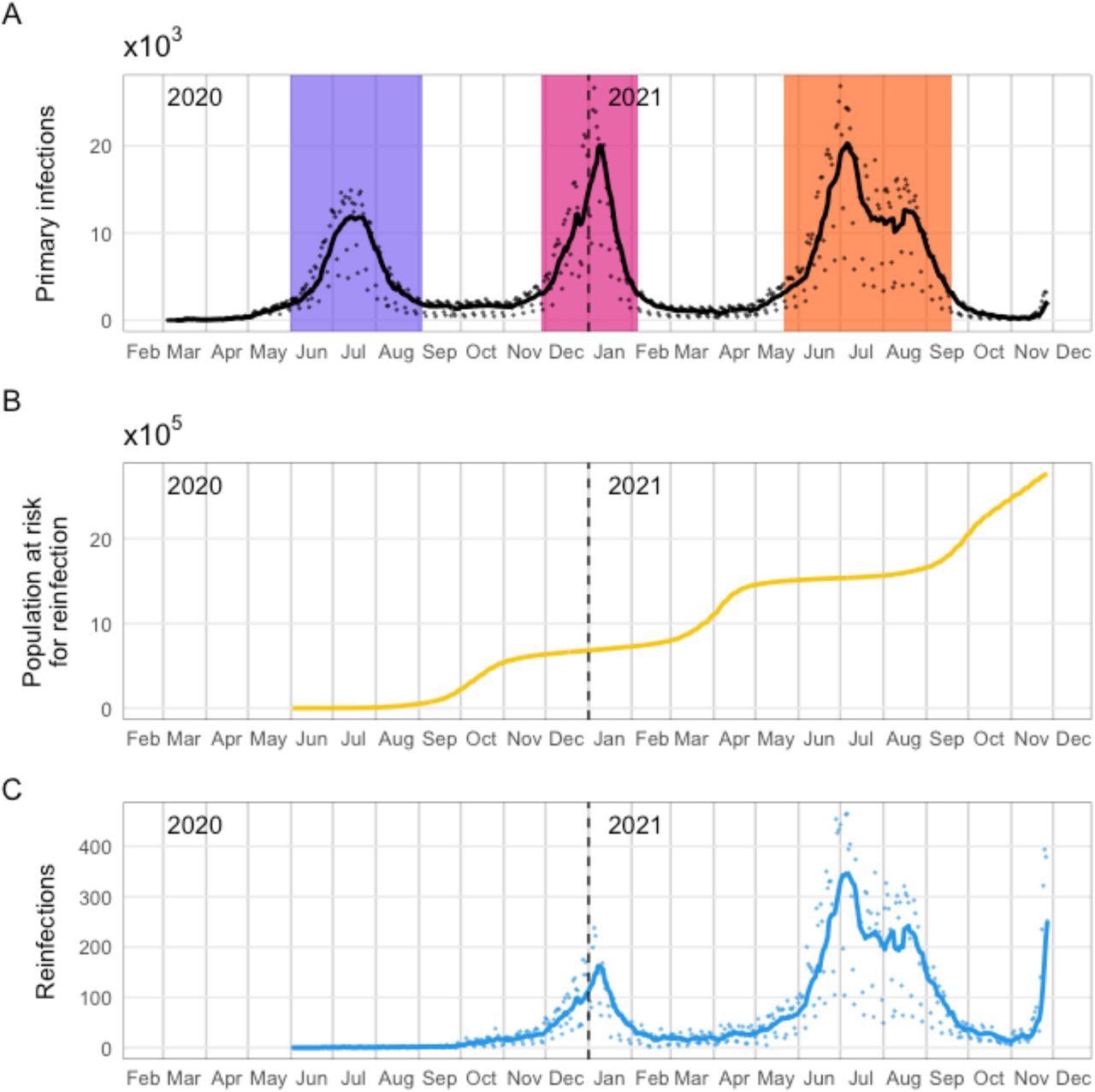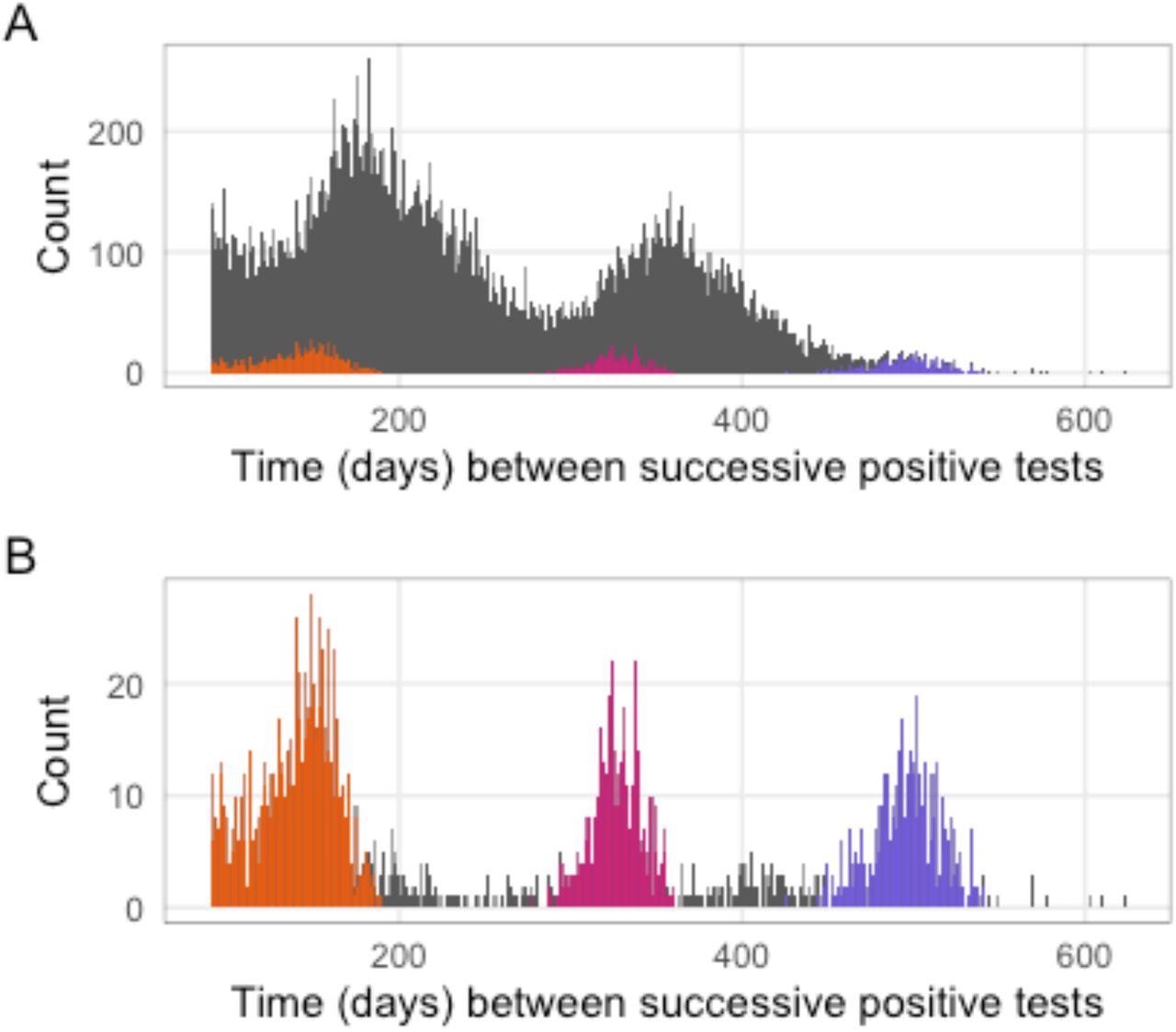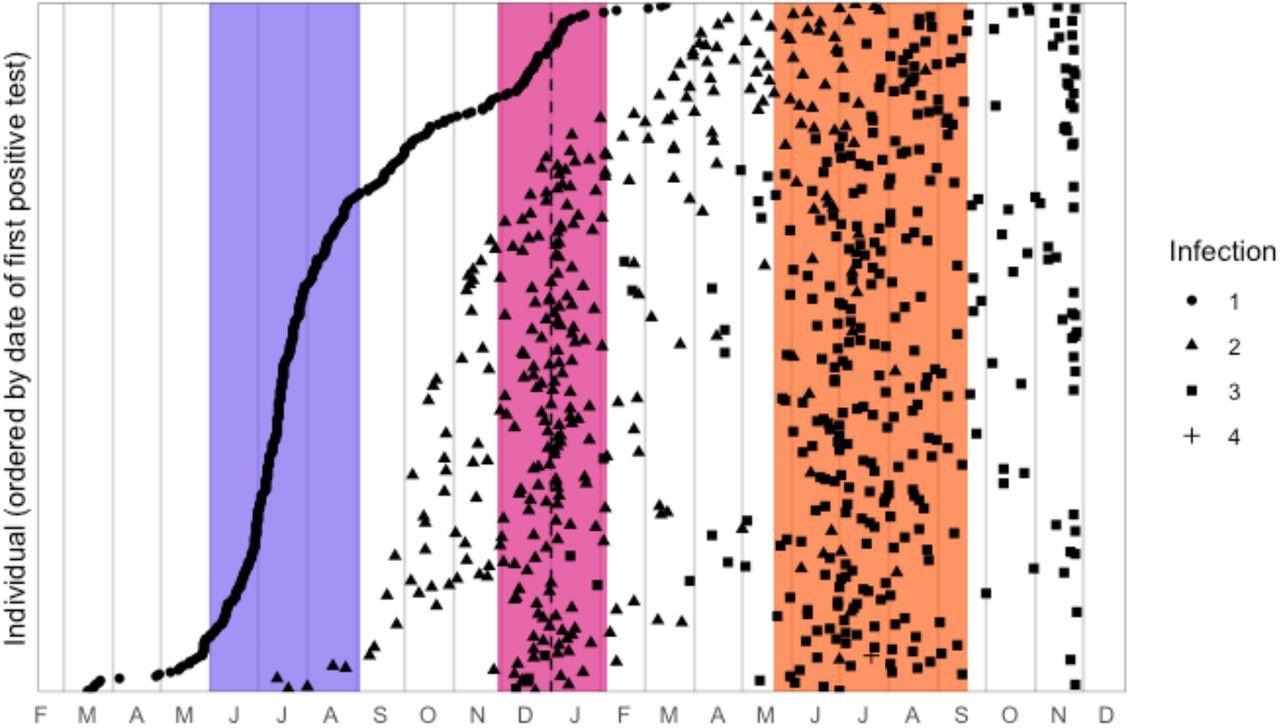New surveillance data from South Africa published in the medRxiv* preprint server suggests that the new severe acute respiratory syndrome coronavirus 2 (SARS-CoV-2) Omicron variant has the potential to escape naturally-acquired immunity. The research indicates people who previously recovered from a coronavirus disease 2019 (COVID-19) are at risk for reinfection with the Omicron variant. The results show that the risk of reinfection is greater with the Omicron variant versus Delta and Beta.
 Study: Increased risk of SARS-CoV-2 reinfection associated with emergence of the Omicron variant in South Africa. Image Credit: NIAID
Study: Increased risk of SARS-CoV-2 reinfection associated with emergence of the Omicron variant in South Africa. Image Credit: NIAID

 This news article was a review of a preliminary scientific report that had not undergone peer-review at the time of publication. Since its initial publication, the scientific report has now been peer reviewed and accepted for publication in a Scientific Journal. Links to the preliminary and peer-reviewed reports are available in the Sources section at the bottom of this article. View Sources
This news article was a review of a preliminary scientific report that had not undergone peer-review at the time of publication. Since its initial publication, the scientific report has now been peer reviewed and accepted for publication in a Scientific Journal. Links to the preliminary and peer-reviewed reports are available in the Sources section at the bottom of this article. View Sources
Background
The Omicron variant was first identified by scientists in South Africa on November 27th, 2021. Not long after, COVID-19 cases from the Omicron variant were reported worldwide including, Australia, the United States, and England. As a result, the Omicron variant is designated as a variant of concern from the World Health Organization.
While current studies on the Omicron variant are ongoing, the estimated 26 to 32 mutations on its spike protein raise concern that it is more transmissible. There is also concern that the Omicron variant can evade the immune system as early cases have reported infections in vaccinated individuals (though mild cases with no hospitalizations).
Individuals with reinfections
The researchers looked at reinfection rates over time. They found 35,670 individuals with at least two suspected COVID-19 infections, 332 suspected of three infections, and one with four infections.
The time between reinfection was between 180 and 360 days. The more recent second infections after October 31st were highest among individuals who were first infected in South Africa’s third wave. But since mid-November, people who were infected from the first and second wave were reinfected again.
About 14.2% of individuals with more than one reinfection had their third infection in November 2021. The trends suggest the second and third reinfection are likely due to the Omicron variant.
 Daily numbers of detected primary infections, individuals eligible to be considered for reinfection, and suspected reinfections in South Africa. A: Time series of detected primary infections. Blackline indicates a 7-day moving average; black points are daily values. Colored bands represent wave periods, defined as the period for which the 7-day moving average of cases was at least 15% of the corresponding wave peak (purple = wave 1, pink = wave 2, orange = wave 3). B: Population at risk for reinfection (individuals whose most recent positive test was at least 90 days ago and who have not yet had suspected reinfection). C: Time series of suspected reinfections. Blueline indicates a 7-day moving average; blue points are daily values.
Daily numbers of detected primary infections, individuals eligible to be considered for reinfection, and suspected reinfections in South Africa. A: Time series of detected primary infections. Blackline indicates a 7-day moving average; black points are daily values. Colored bands represent wave periods, defined as the period for which the 7-day moving average of cases was at least 15% of the corresponding wave peak (purple = wave 1, pink = wave 2, orange = wave 3). B: Population at risk for reinfection (individuals whose most recent positive test was at least 90 days ago and who have not yet had suspected reinfection). C: Time series of suspected reinfections. Blueline indicates a 7-day moving average; blue points are daily values.
Reinfection trends
The researchers employed two methods to measure reinfection trends with three variants of concern circulating in South Africa: Delta, Beta, and the newly identified Omicron variant.
 Time between detection of first and second infections. A: Time in days between infections for individuals with suspected reinfection. Note that the time since the previous positive test must be at least 90 days. Colors represent suspected reinfections diagnosed since 1 November 2021. B: Time in days between infections for individuals with suspected reinfections diagnosed since 1 November 2021. Bars for these individuals are colored by the wave during which the primary infection occurred in both panels (purple = wave 1, pink = wave 2, orange = wave 3).
Time between detection of first and second infections. A: Time in days between infections for individuals with suspected reinfection. Note that the time since the previous positive test must be at least 90 days. Colors represent suspected reinfections diagnosed since 1 November 2021. B: Time in days between infections for individuals with suspected reinfections diagnosed since 1 November 2021. Bars for these individuals are colored by the wave during which the primary infection occurred in both panels (purple = wave 1, pink = wave 2, orange = wave 3).
The rate of reinfections decreased through September 2021, suggesting reinfection was uncommon, and people held considerable protection after infection. Additionally, the number of primary infections began to decline in early October, which may have to do with an increase in vaccinations at the time. Overall, the results show that Beta and Delta held minimal reinfection risk or evidence of immune escape.
“Our findings for the period before the emergence of Omicron are consistent with results from the PHIRST-C community cohort study conducted in two locations in South Africa, which found that infection prior to the second wave provided 84% protection against reinfection during the second (Beta) wave…” explained the researchers.
However, the number of daily new reinfections soared in early November 2021 and remained high despite increasing vaccination rates. The findings indicate the rate of reinfection is likely due to the spread of the Omicron variant.
The researchers note that more population data in early-to-mid December will tell scientists more about the full extent of Omicron’s immune escape ability.
 Timing of infections for individuals with multiple suspected reinfections. Circles represent the first positive test of the first detected infection; triangles represent the first positive test of the suspected second infection; squares represent the first positive test of the suspected third infection. Colored bands represent wave periods, defined as the period for which the 7-day moving average of cases was at least 15% of the corresponding wave peak (purple = wave 1, pink = wave 2, orange = wave 3).
Timing of infections for individuals with multiple suspected reinfections. Circles represent the first positive test of the first detected infection; triangles represent the first positive test of the suspected second infection; squares represent the first positive test of the suspected third infection. Colored bands represent wave periods, defined as the period for which the 7-day moving average of cases was at least 15% of the corresponding wave peak (purple = wave 1, pink = wave 2, orange = wave 3).
Limitations and implications
A major limitation is that the study did not factor in how testing practices, health-seeking behavior, or access to care affect a person’s chances at reinfection. Additionally, reinfection rates may be underreported as rapid antigen tests were unavailable to Africa until late 2020.
The findings show an ongoing risk of reinfection is strongly associated with the arrival of the Omicron variant.
The research team also suggests that Omicron may be more capable of evading the immune system because it has an increased ability to infect people with naturally-acquired immunity. The Omicron variant may be working differently from Beta or Delta, which spread not because of immune escape, but because of increased transmissibility.
While there is currently no data on Omicron’s impact on neutralizing antibodies (which are produced after vaccination), there is a chance that Omicron’s immune escape ability impacts both naturally-acquired and vaccine-derived immunity.

 This news article was a review of a preliminary scientific report that had not undergone peer-review at the time of publication. Since its initial publication, the scientific report has now been peer reviewed and accepted for publication in a Scientific Journal. Links to the preliminary and peer-reviewed reports are available in the Sources section at the bottom of this article. View Sources
This news article was a review of a preliminary scientific report that had not undergone peer-review at the time of publication. Since its initial publication, the scientific report has now been peer reviewed and accepted for publication in a Scientific Journal. Links to the preliminary and peer-reviewed reports are available in the Sources section at the bottom of this article. View Sources
Journal references:
- Preliminary scientific report.
Pulliam JRC, et al. (2021). Increased risk of SARS-CoV-2 reinfection associated with emergence of the Omicron variant in South Africa. medRxiv. Doi: https://doi.org/10.1101/2021.11.11.21266068, https://www.medrxiv.org/content/10.1101/2021.11.11.21266068v2
- Peer reviewed and published scientific report.
Pulliam, Juliet R. C., Cari van Schalkwyk, Nevashan Govender, Anne von Gottberg, Cheryl Cohen, Michelle J. Groome, Jonathan Dushoff, Koleka Mlisana, and Harry Moultrie. 2022. “Increased Risk of SARS-CoV-2 Reinfection Associated with Emergence of Omicron in South Africa.” Science 376 (6593). https://doi.org/10.1126/science.abn4947. https://www.science.org/doi/10.1126/science.abn4947.